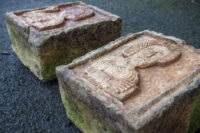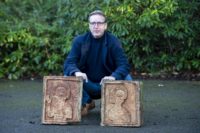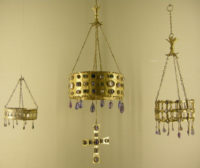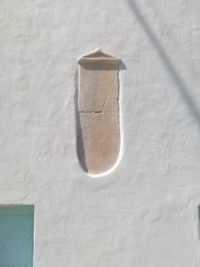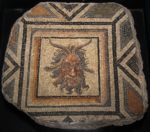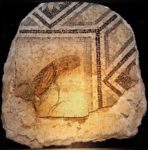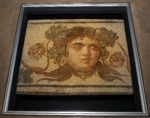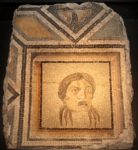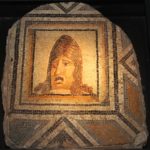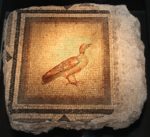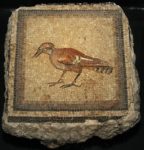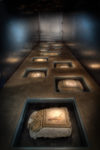My only excuse, and it’s a terrible one that you should throw back in my face in disgust, is that the Metropolitan Museum of Art fell for it too. Had they accepted a fraudulent ownership record starring a Swiss private collector a few years back I would have laughed mirthlessly at the very idea of it, but the sensitivity to potentially looted artifacts is so much higher now that museums and auction houses have been dragged kicking and screaming into giving a damn by source countries creating legal and PR nightmares for them. That such a recent, high-profile, much-publicized sale could be a looted artifact with phony papers is an ugly testament to how deep the rot runs in the antiquities market.
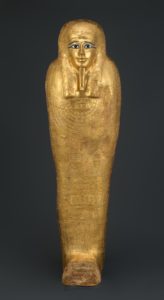 In September 2017, the Met announced the acquisition of what is without question the most beautiful, perfectly-preserved and uniquely rich cartonnage coffin I’ve ever seen. Made from layers of linen, gesso and resin, covered in gilding front and back and lined with sheets of silver foil inside the lid, the mummiform coffin was the final resting place of Late Ptolemaic official Nedjemankh, a priest of Heryshef in Heracleopolis Magna.
In September 2017, the Met announced the acquisition of what is without question the most beautiful, perfectly-preserved and uniquely rich cartonnage coffin I’ve ever seen. Made from layers of linen, gesso and resin, covered in gilding front and back and lined with sheets of silver foil inside the lid, the mummiform coffin was the final resting place of Late Ptolemaic official Nedjemankh, a priest of Heryshef in Heracleopolis Magna.
The gilded coffin of Nedjemankh went on display immediately in the museum’s Egyptian Art gallery, and soon got a dedicated exhibition that ran from July 2018 until Tuesday, February 12th. Or at least it was meant to. There was supposed to be an exhibition tour beginning on February 22nd. No longer. I don’t know exactly which day, but the coffin was taken off display this week.
On Friday the museum announced that it was returning the coffin to Egypt because the Manhattan’s DA Office had found evidence that the Swiss private collection and legal export document from 1971 were nothing but happy horseshit conjured up by traffickers in looted antiquities. Not only was it not legally exported in 1971, it didn’t leave Egypt until 2011 and I don’t need to tell you the circumstances were very, very far from legal.
Notwithstanding the representations that the coffin had been exported from Egypt in 1971, recent evidence suggests it was looted from Egypt in 2011. Manhattan District Attorney Cy Vance said, “Stewards of the world’s most important artifacts have a duty to hold their acquisitions to the highest level of scrutiny. Following my Office’s investigation, this beautiful piece of ancient Egyptian history will soon be returned to its rightful place. Our Antiquities Trafficking Unit will continue to root out stolen antiquities in our fight to stop the looting of historic sites and the trade of stolen artifacts around the world.”
The seller was a Paris dealer named Christophe Kunicki. The Met is less than pleased with him having paid 3.5 million euros (just under $4 million) for the coffin in July of 2017, just six years after it was stolen from Egypt. This character has yet to comment on the fraudulent sale and the Met plans to consider “all means,” according to spokesman Kenneth Weine, for the recovery of the $4 million they were conned out of. There is no word on any criminal action that might be taken against him, and there probably won’t be.
The Metropolitan Museum of Art announced today it will review and revise its acquisitions process. Max Hollein, Director of The Met, said, “Our museum must be a leader among our peers in the respect for cultural property and in the rigor and transparency of the policy and practices that we follow. We will learn from this event—specifically I will be leading a review of our acquisitions program—to understand what more can be done to prevent such events in the future.”
Here’s one revision to any museum or collector’s acquisition policy that needs to be carved in stone from now on: buy nothing purporting to come from Swiss private collections. It’s a scam every damn time. The Met apologized to Egypt profusely and abjectly, as well it should, and I do the same to you, as well I should. I can’t believe I was so thoroughly duped by the oldest lie in the book, one I have mocked and excoriated ad nauseum in this very blog a million times before.
